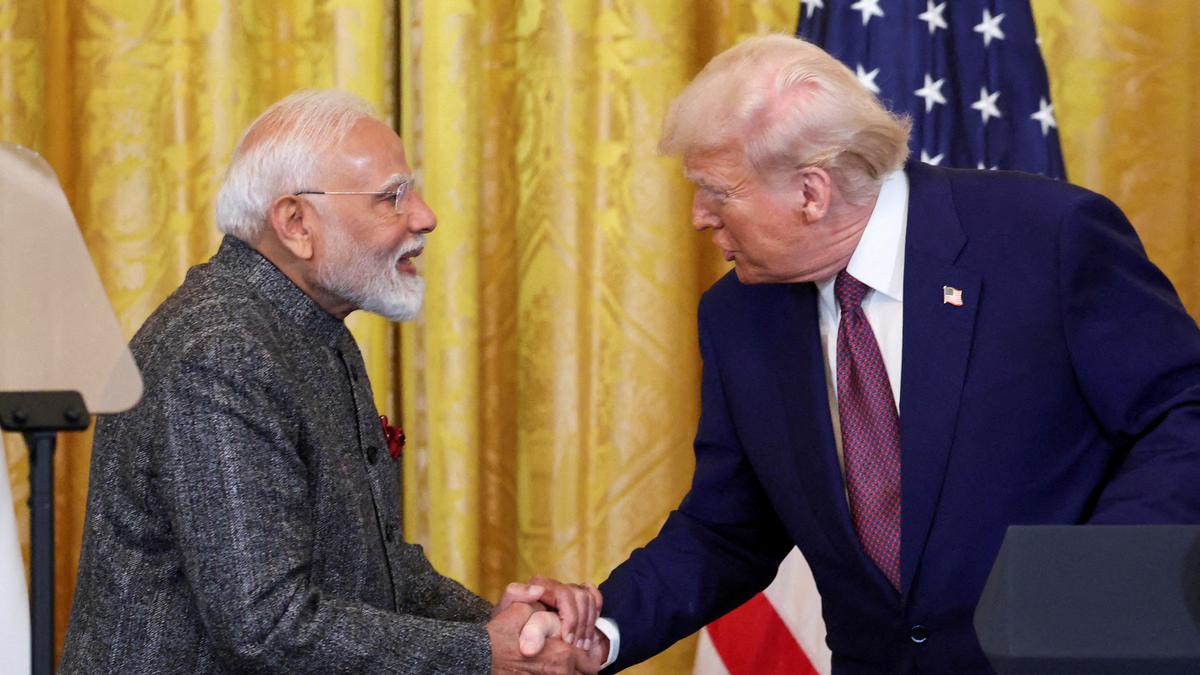
- Lalit Garg-
The positive conversation between India and the United States in New Delhi aimed at removing obstacles in trade negotiations has given new momentum to bilateral relations. After nearly three months, U.S. President Donald Trump called Prime Minister Narendra Modi to wish him on his 75th birthday and expressed gratitude for India’s support of a ceasefire in the Russia–Ukraine conflict. This outreach is being seen as an effort to ease the bitterness that had crept into the relationship. The conversation between Modi and Trump has injected fresh optimism and hope, particularly because India—despite facing unilateral tariffs and sharp rhetoric from Washington—chose restraint over retaliation, waiting patiently for dialogue to prevail.
The 50 percent tariff imposed by Trump on Indian goods had sparked two distinct voices within America itself. Against this backdrop, continued dialogue at the highest level became imperative. U.S. Treasury Secretary Scott Basent even acknowledged that sooner or later India and America would come together, describing it as the greatest need of the hour. The recent conversation between Modi and Trump is a step in that direction. Held on Modi’s birthday, the dialogue not only marked a gesture of goodwill but also shifted focus from past grievances to future possibilities. One of the triggers for Trump’s softer stance was the display of camaraderie between the leaders of Russia, China, and India during the Shanghai Cooperation Organisation summit—an event that heightened Washington’s concerns. Since then, Trump has indicated on several occasions, including on September 10, that trade talks with India would move forward.
In today’s world, the India–U.S. relationship is more than bilateral—it has global repercussions. The U.S. remains the world’s largest economy and military power, while India is an emerging economic force and the world’s largest democracy. Their partnership rests on shared democratic values, transparency, and aspirations for global peace. Differences have surfaced at times—over tariffs, visa policies, the India–Pakistan ceasefire, and defense agreements. Yet, the strategic partnership has continued to grow stronger. The U.S. is India’s largest trading partner, with deep cooperation in IT, services, energy, and technology. Modi has consistently emphasized the need to remove trade barriers, while Trump has signaled willingness to work toward reducing America’s trade deficit. This convergence holds the promise of elevating bilateral trade to new heights.
India–U.S. defense ties have accelerated over the past decade. Washington has supplied New Delhi with key defense technologies, and joint military exercises have reinforced security cooperation. In the context of China’s growing assertiveness in the Indo-Pacific, this partnership is not just bilateral but also central to regional stability. The Quad initiative emerged from this very need, although Trump’s tariff policies had cast doubts on its future. Washington had also been concerned that Trump’s erratic moves could undo decades of progress in the relationship. The latest dialogue, however, suggests that the clouds of uncertainty are beginning to lift.
Energy is another pillar of cooperation. Imports of U.S. liquefied natural gas and crude oil are rising, strengthening India’s energy security and fueling its economic growth. Technology is equally significant—spanning information technology, cybersecurity, space research, and artificial intelligence. These sectors are set to become game-changers for decades to come. The Indian diaspora in America continues to act as a cultural and emotional bridge. From politics to healthcare, education to technology, the contributions of Indian-Americans have been immense. Modi and Trump’s recent dialogue also acknowledged the community’s role in deepening bilateral trust and closeness.
Both India and the U.S. have been scarred by terrorism—9/11 in America and 26/11 in India. This shared trauma has aligned their perspectives on counterterrorism. The two leaders reaffirmed their resolve to strengthen security cooperation and confront terrorism globally. Given the turbulence in Afghanistan and Central Asia, Indo–U.S. coordination will be crucial for peace and stability.
Trade remains a sticking point. Despite five rounds of trade negotiations, talks stalled after Washington imposed 50 percent tariffs. The sixth round, however, has now resumed. The U.S. seeks greater access to India’s agriculture and dairy markets, but India has firmly resisted such demands, citing the interests of its farmers, fishermen, and small industries. Modi’s government has been categorical that these sectors are non-negotiable. Over the past decade, bilateral trade has nearly doubled, and both nations have set a target of reaching $500 billion by 2030. Achieving this goal will require resolving current deadlocks, and dialogue remains the only path forward. Meanwhile, India is also pursuing free trade agreements with other partners, including the European Union.
The larger question is whether Trump’s apparent shift in tone marks the beginning of a new chapter. His unpredictability makes trust difficult, yet the willingness to understand India’s perspective is a welcome sign. If Washington abandons its rigid stance and embraces a more balanced approach, the results could be far-reaching. For now, Modi and Trump’s conversation have signaled that disagreements need not spell the end of relations; rather, they can serve as the basis for fresh dialogue and cooperation. As the world grapples with pandemics, economic crises, wars, and geopolitical instability, the India–U.S. partnership offers a ray of stability and direction. Whether this dialogue translates into lasting change remains to be seen—but it has certainly rekindled hope.